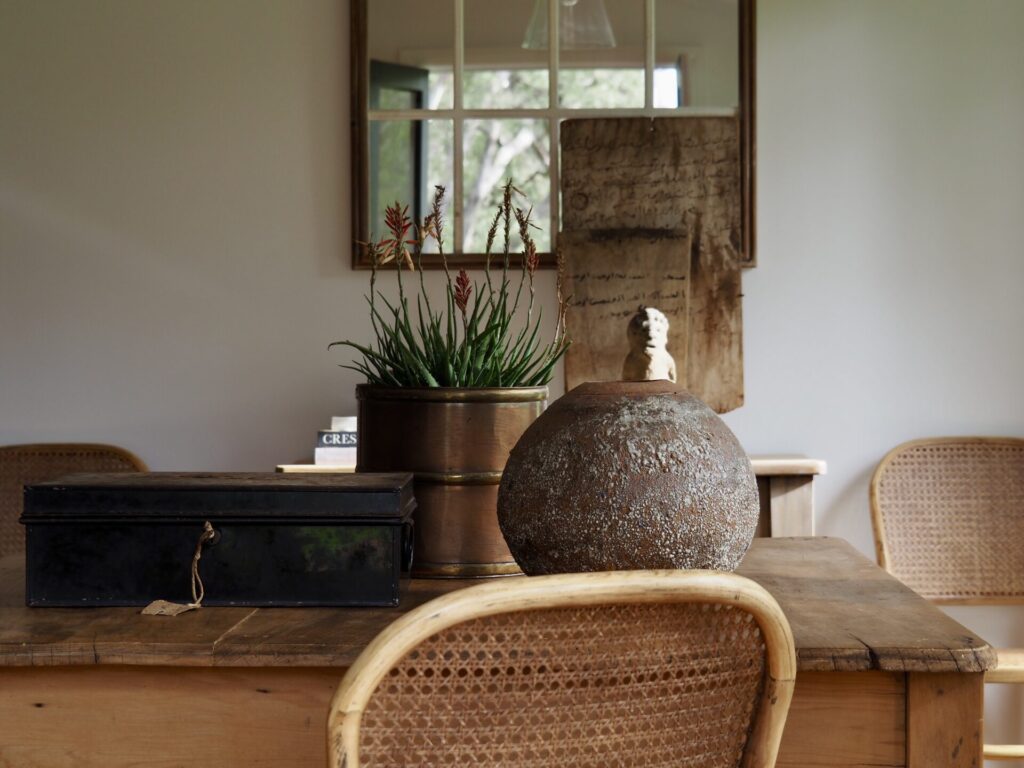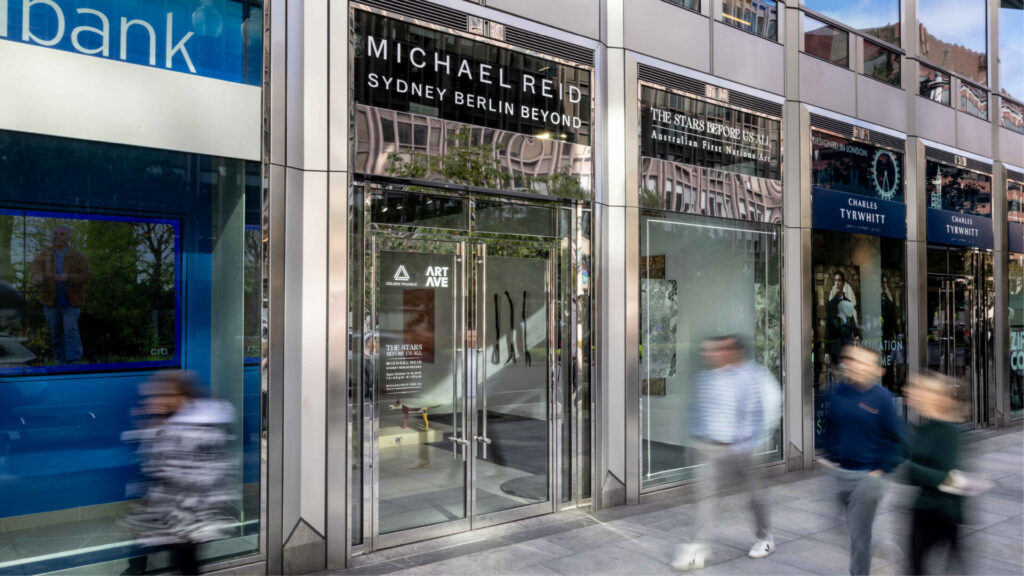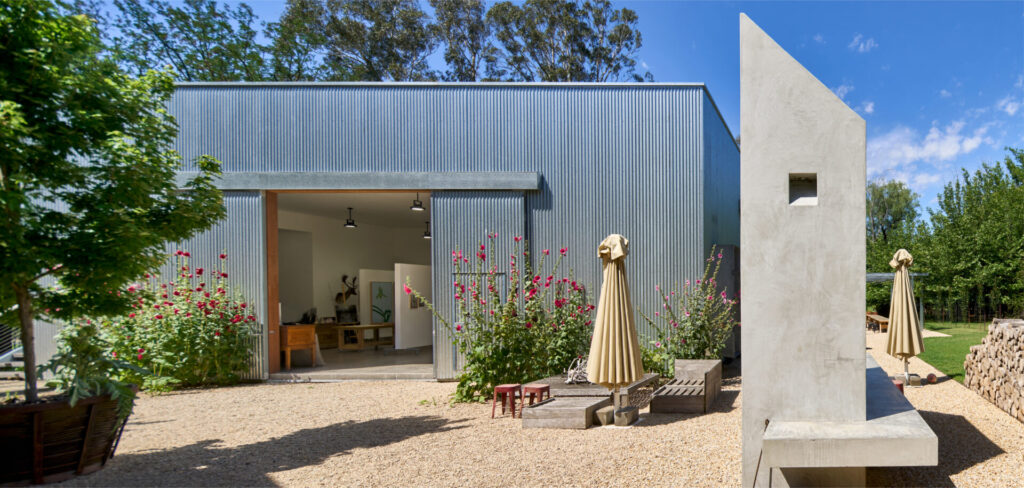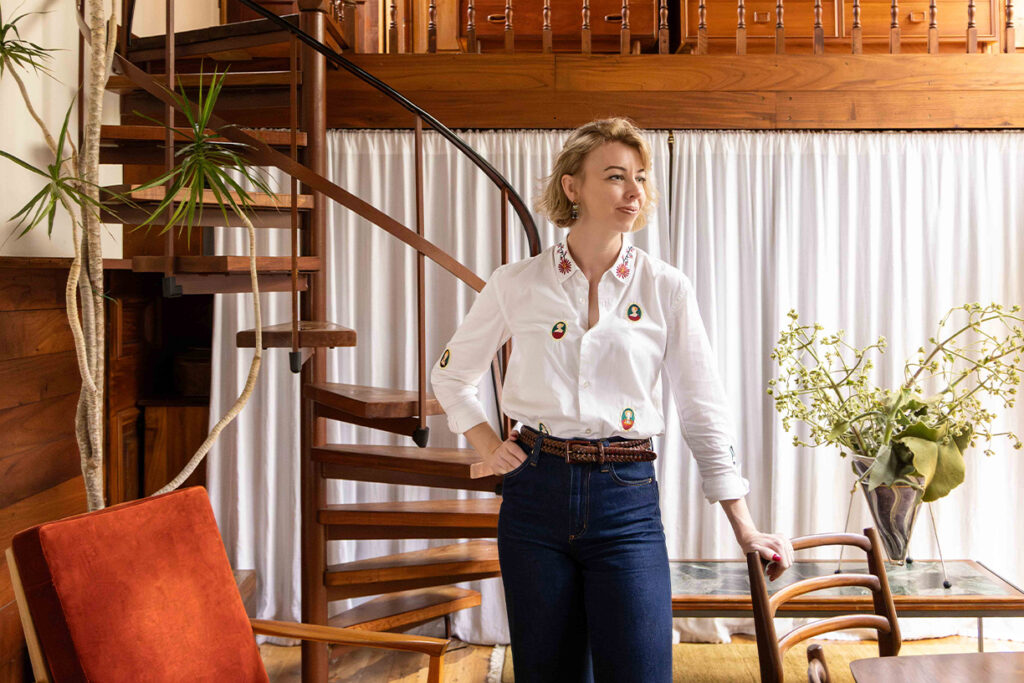Carly Le Cerf by Sarah Hetherington
Within the Western tradition, to paint the Australian landscape is to bear the weight of over 200 years of artists who have travelled this well-trodden path. And yet, its lure continues to captivate contemporary artists today, eager to make their own mark.
Carly Le Cerf is one such artist, with a very particular intention in mind. Originally from the United Kingdom, Le Cerf relocated to Australia at age five and now lives and works in Denmark in Western Australia. In the early 2000s, Le Cerf resided in the Pilbara region of Western Australia in a house that was the last in town. She recalls, “Across the road was an endless stretch of nothing. So, at the end of the day or on weekends, I would go for long hikes, sit, and paint the landscape. I haven’t stopped since.”
With a background in art education and a deep interest in art history, Le Cerf’s knowledge of the lineage of Australian landscape painters is informed. Rather than derivation, she is aware of previous artist’s motifs and how not to emulate. She notes, “When I am in the landscape, I see Fred Williams’ trees, or Sydney Long’s trees.” Although not a direct influence in her work, Le Cerf acknowledges and respects Indigenous knowledge and Country.
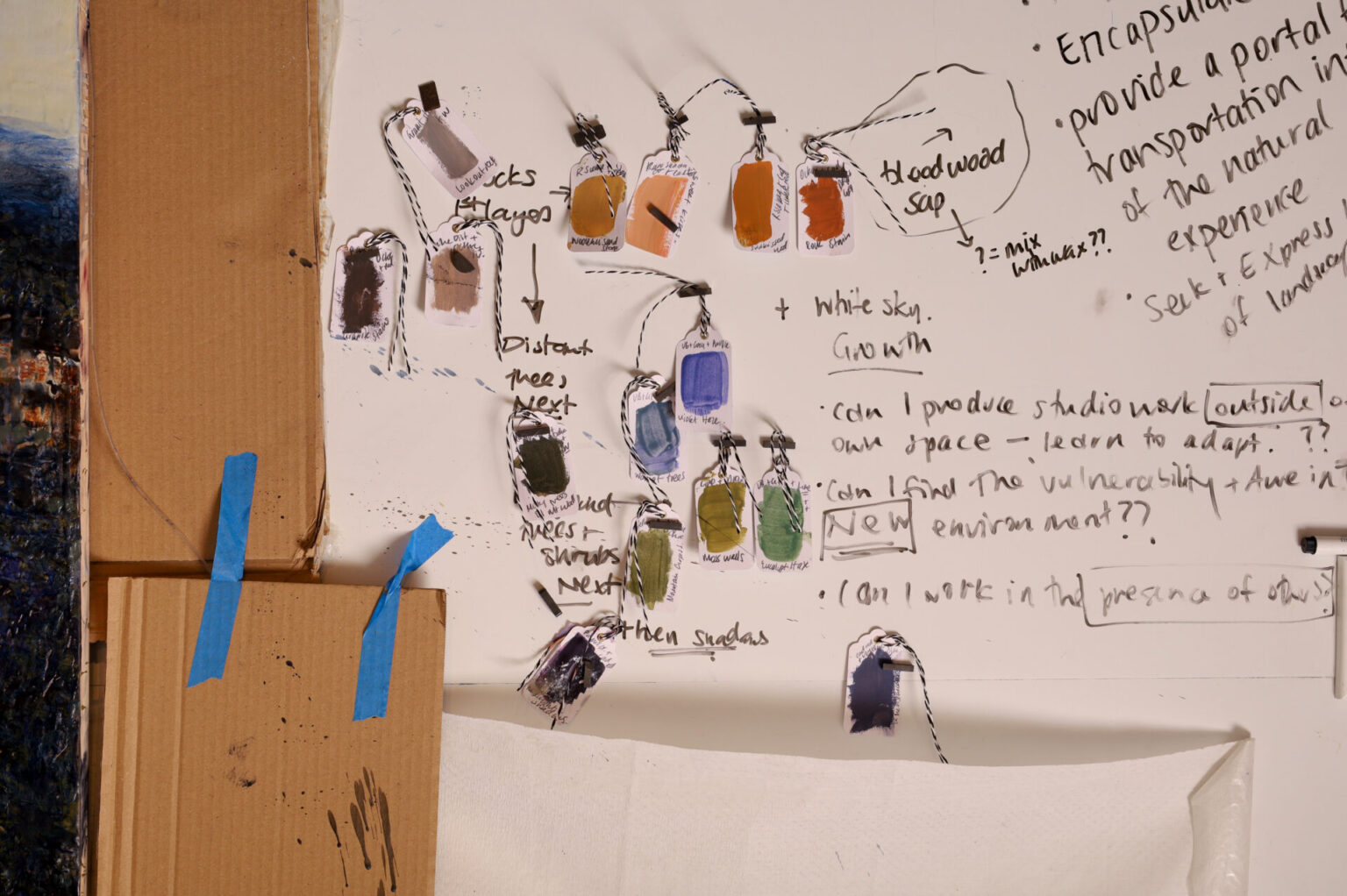
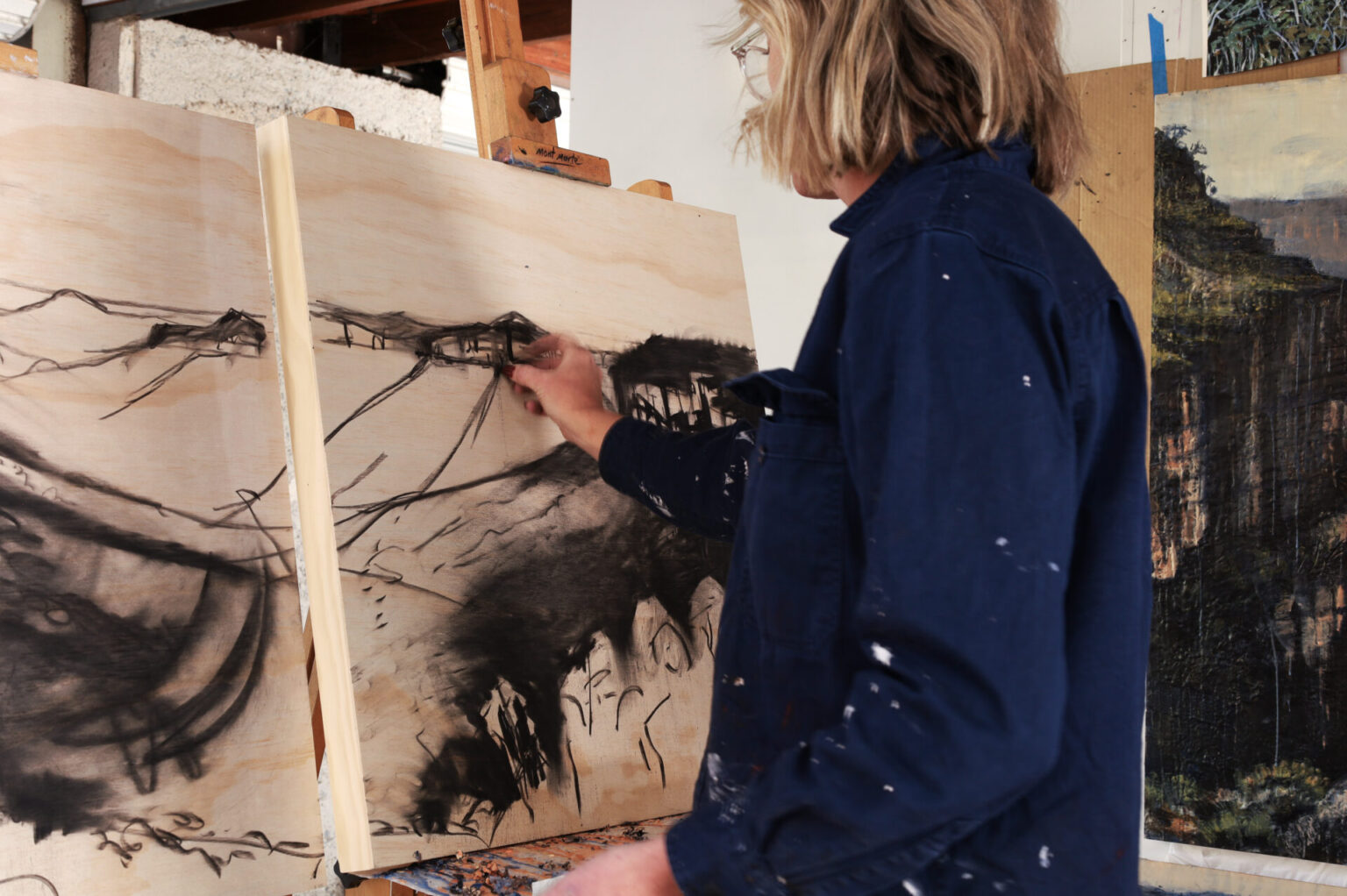
Whilst other locations including the MacDonnell Ranges in the Northern Territory have featured as subjects, it is the rugged beauty of the Pilbara that she continues to return to, capturing its distinctive red earth, weathered rock formations, tree-dotted plains, and vast, open spaces. These landscapes showcase her ability to translate, through colour, perspective and texture, not just the visual aspects of the Pilbara in a linear sense, but also it’s intense heat, isolation and even profound stillness.
Now, however, Le Cerf has embarked on a new artistic journey in the Blue Mountains, undertaking a month-long residency at Bilpin international ground for Creative Initiatives (BigCi) which is situated on the edge of Wollemi National Park. The UNESCO World Heritage site, located west of Sydney in New South Wales, offers a stark contrast to the arid landscapes of Western Australia, marking a significant shift in Le Cerf’s painting. Known for its panoramic escarpments – astonishingly steep valleys and cliffs with waterfalls throughout – the region’s name comes from the blue haze that often envelops the mountains, created by oil droplets released from abundant eucalyptus trees.

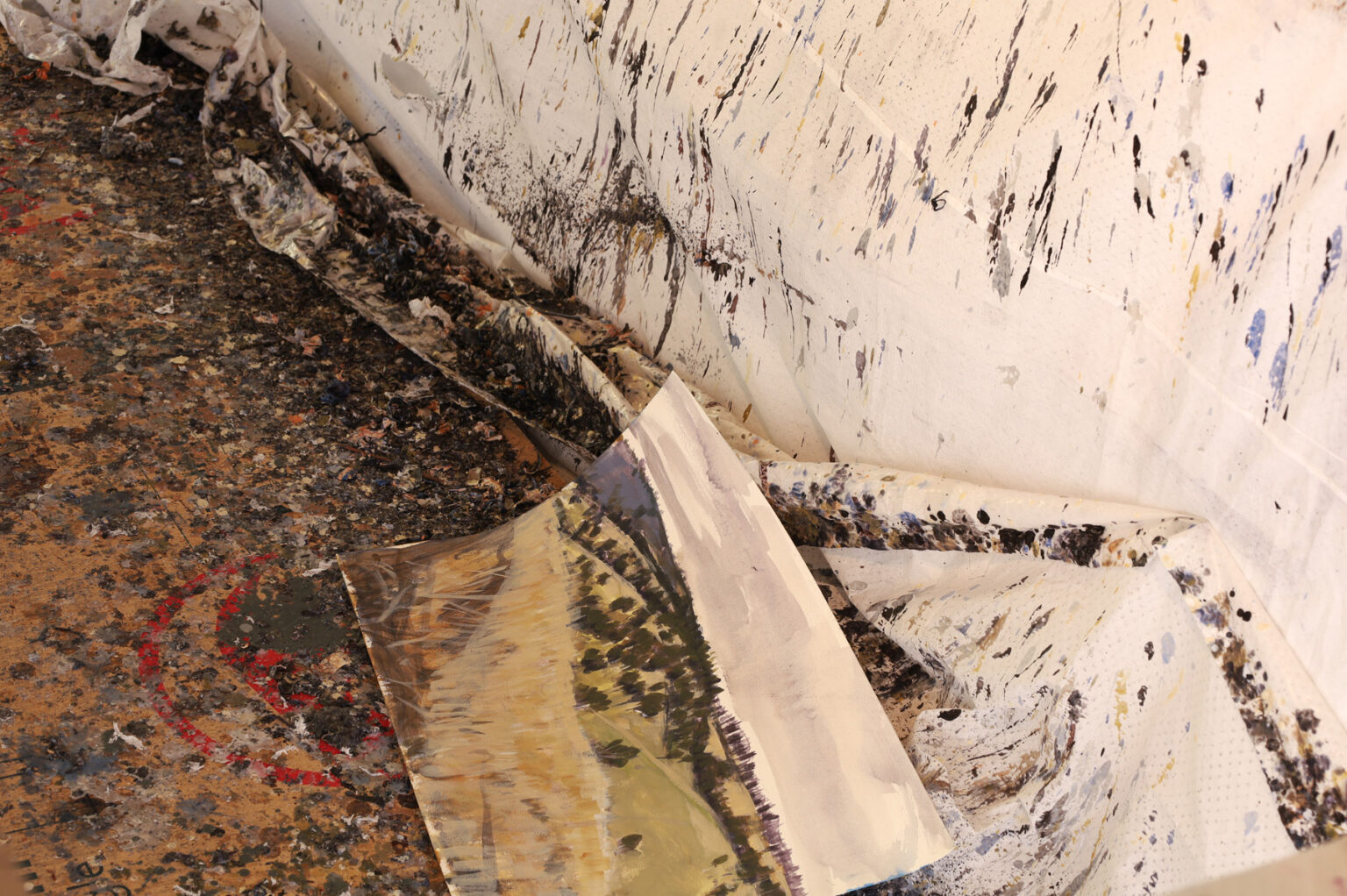
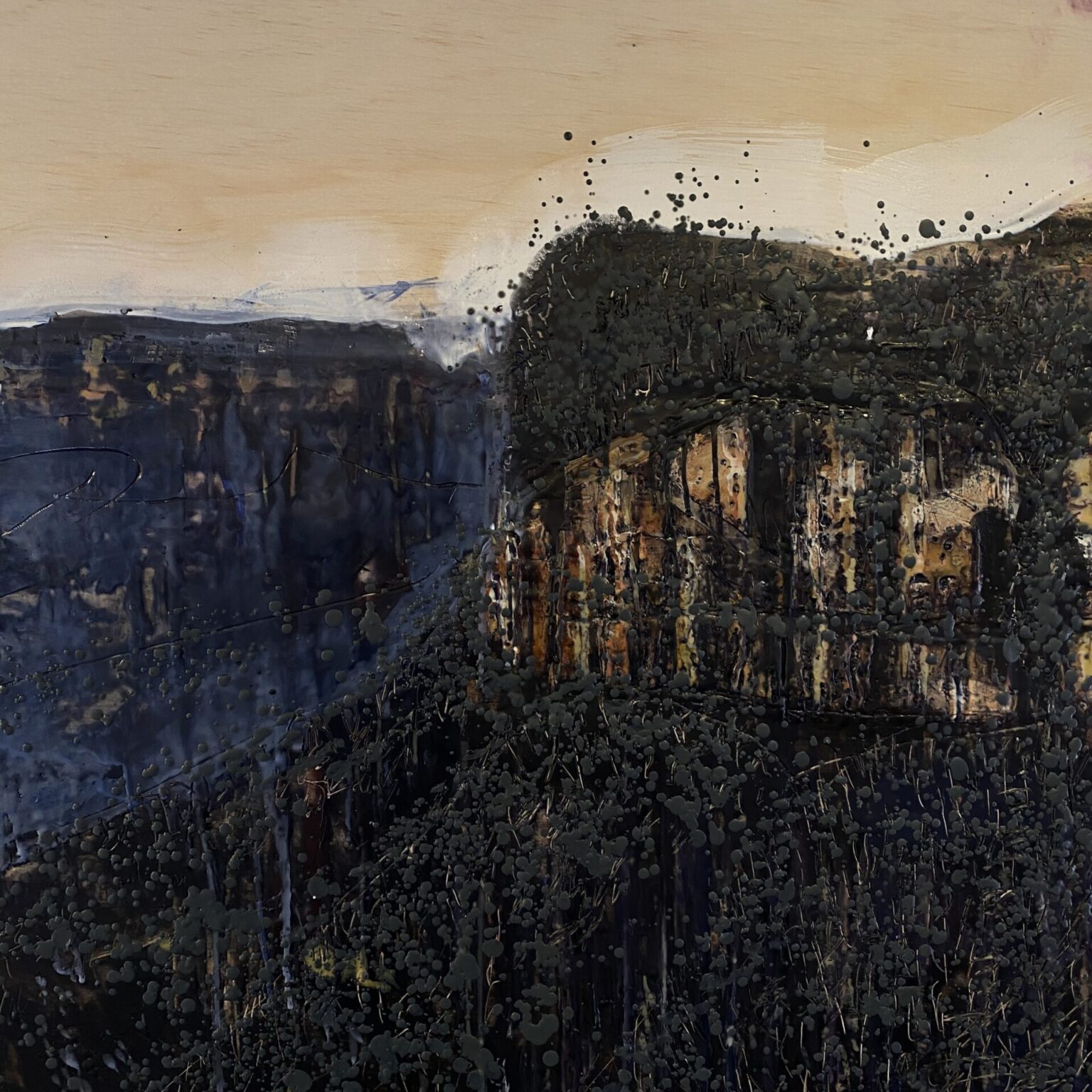
The recent residency, partly funded by Regional Arts Australia, presented itself at an opportune time in Le Cerf’s career and practice. Relishing a new challenge, her plan was to undertake an upscaling of her work, creating a 4-metre-long panoramic painting on board that could also function as individual panels. Additionally, the residency has allowed her to immerse herself in the landscape for a sustained period, with an immediacy not previously experienced. She comments, “Unlike my time in the Pilbara, at the residency, I can be in the landscape daily. I can go for a drive or a walk, do some drawing, figure something out and then add that back into the painting.”
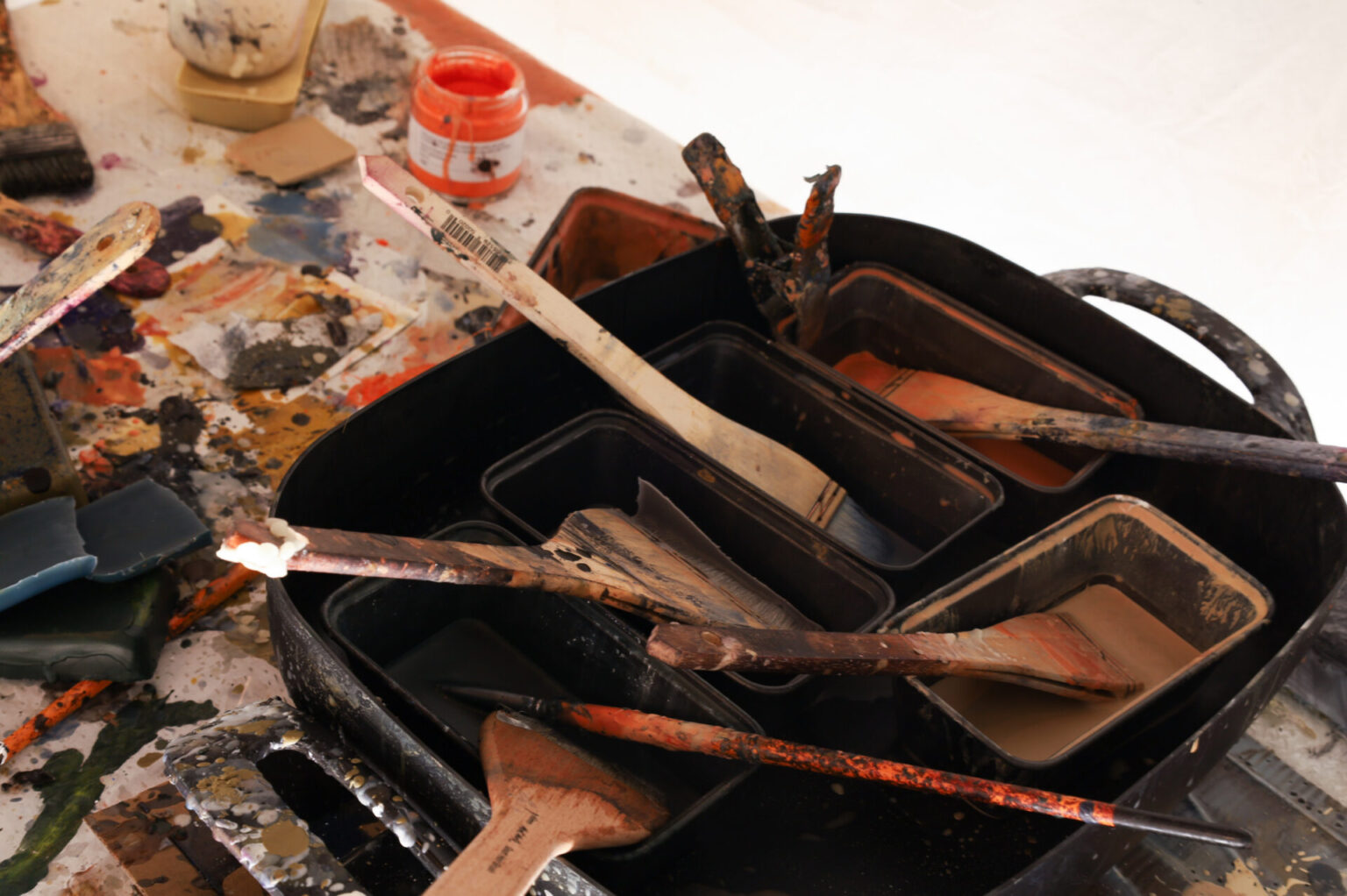
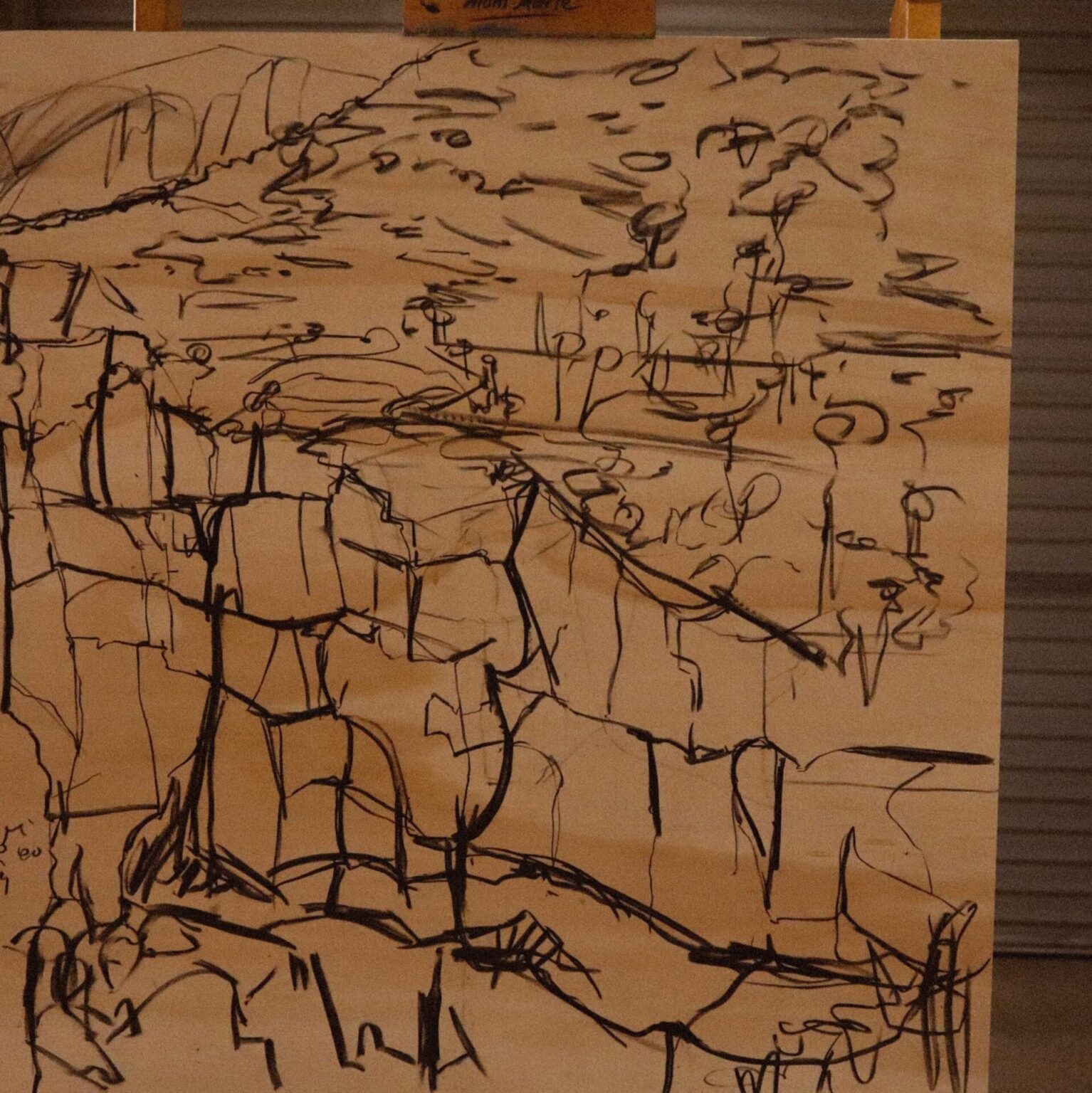
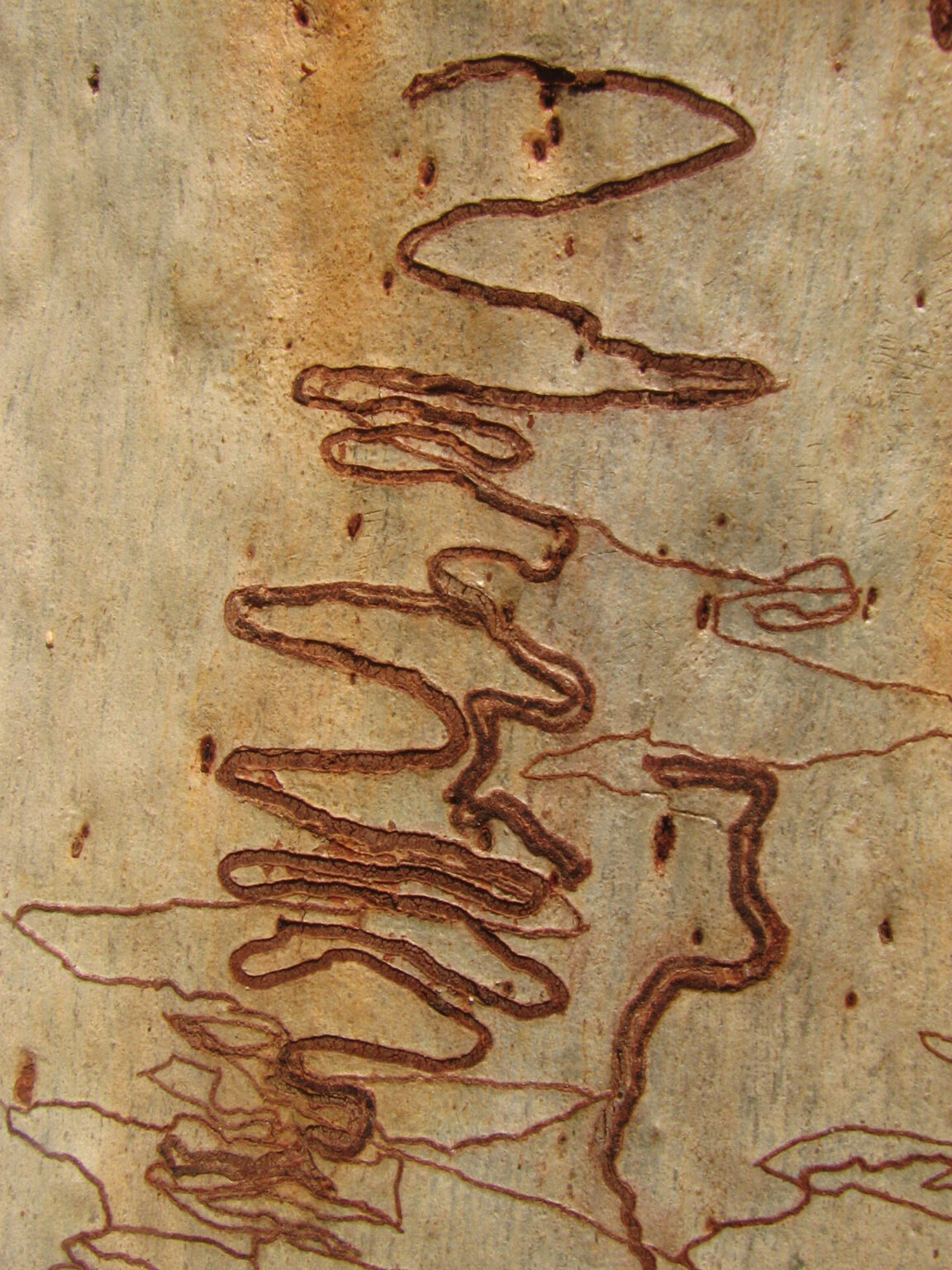
Le Cerf’s practice is process driven and it is imperative that time is spent in the landscape – looking, walking, meticulously recording colours, photographing, capturing the light, sketching, writing and making gouache studies en plein air. Significant time is taken embedding the memory and experience of a place into her mind. She posits, “John Olsen referred to it as ‘being a journey person.’” Upon returning to the studio, her critical source material is gathered, laid out on the studio table and attached to the walls. At this point, the encaustic painting process commences. Le Cerf describes this as “sculpting the landscape”, in that her chosen medium is very three-dimensional, each layer applied sinks into the rigid and porous surface board and eventually becomes one substrate.

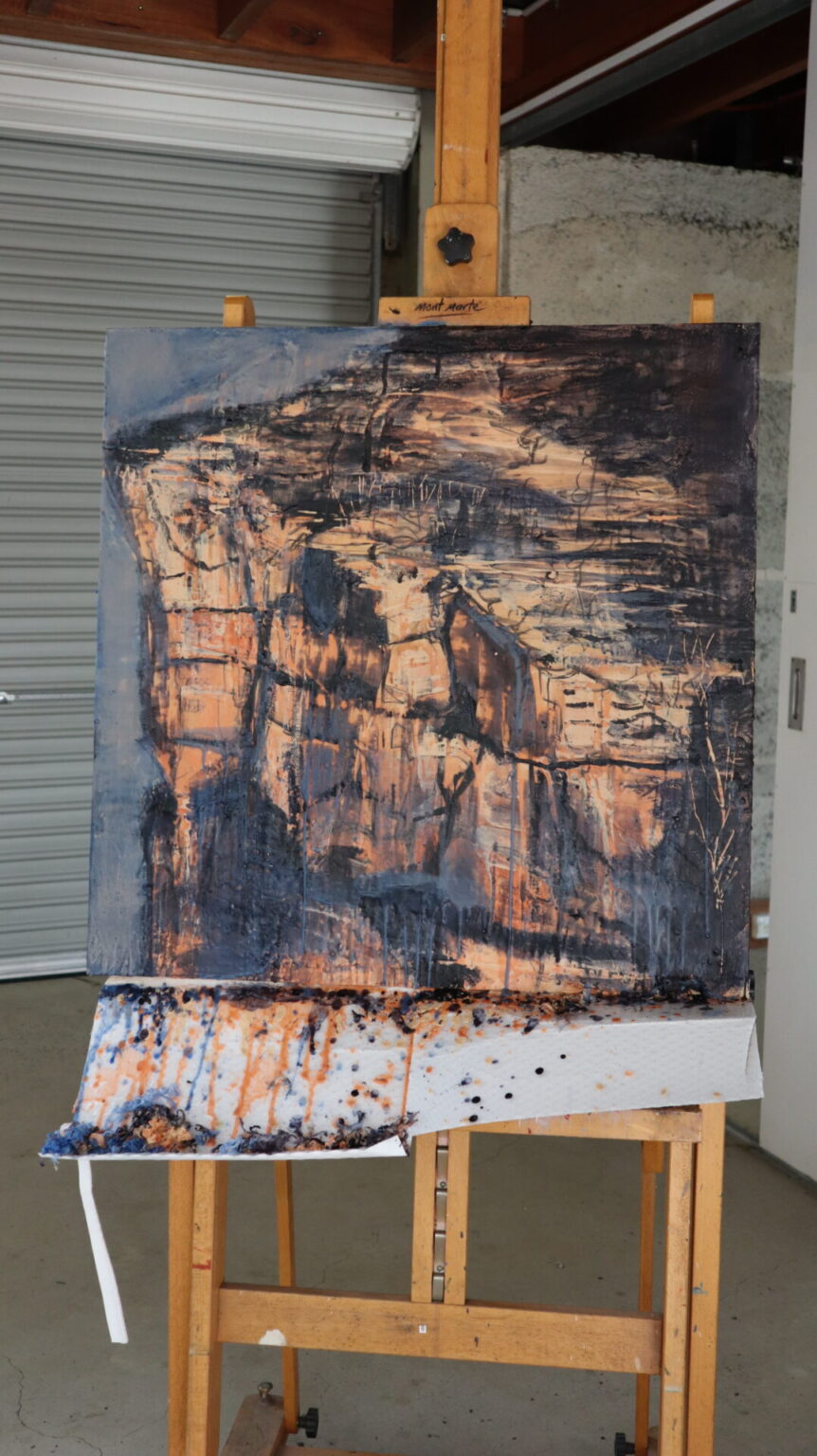
Gradually, her source material falls away and she starts responding purely to the painting process itself, noting it is “very physical – carving, painting, scraping, vertically and horizontally, I am constantly moving boards on and off the wall, all day and non-stop until the work becomes its own entity.” Much like its geography, the new panorama, Boundless Love (2024) has taken time to form and is compelling. Le Cerf has captured the breathtaking, soaring landscape of the Blue Mountains. Expanses of cool, deep greens coalesce with areas of rough sandstone under a muted wintry sky. Despite the dry, craggy rock formations, there is a rich lushness in the work, one can sense the eucalyptus scent being carried by the wind.

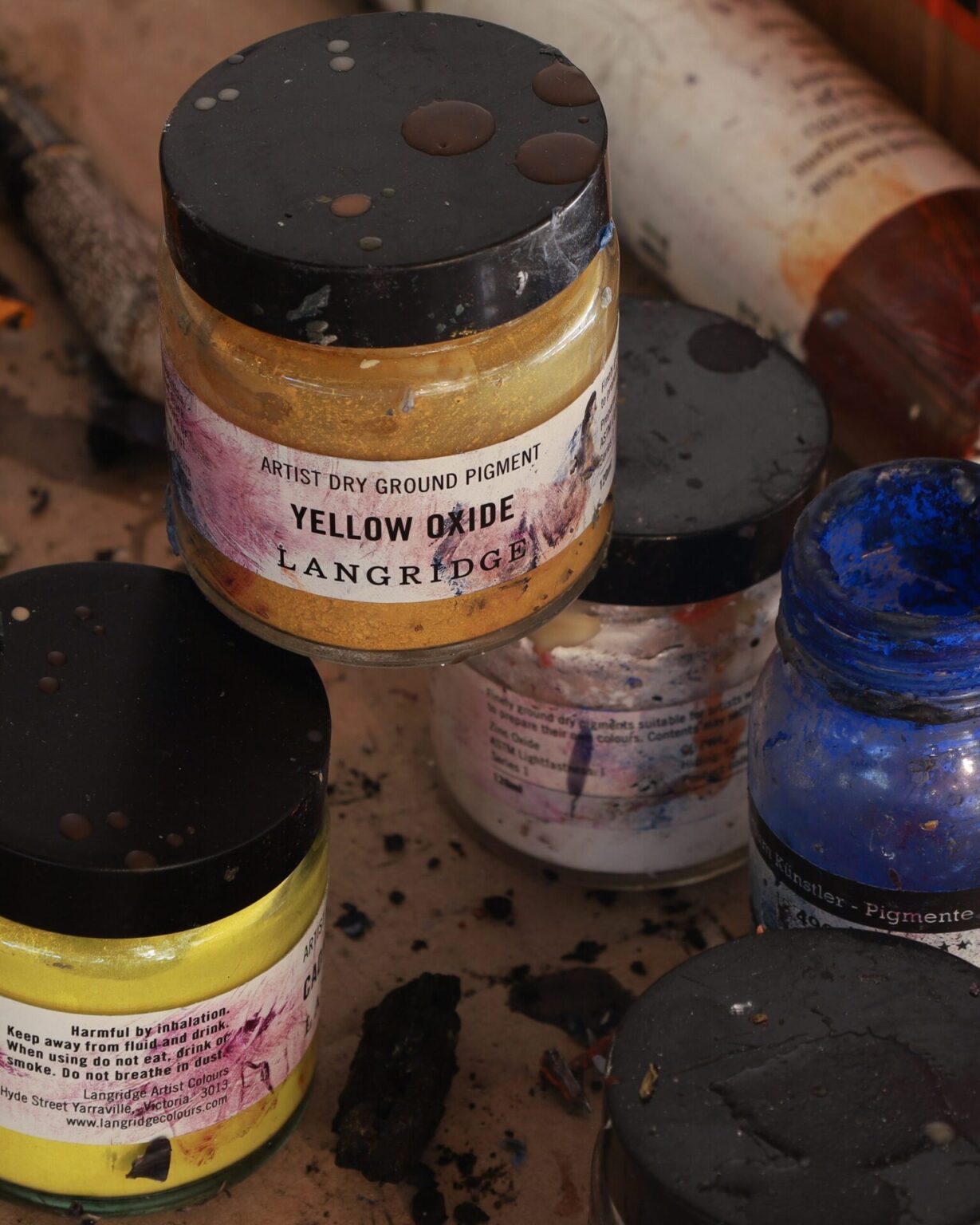
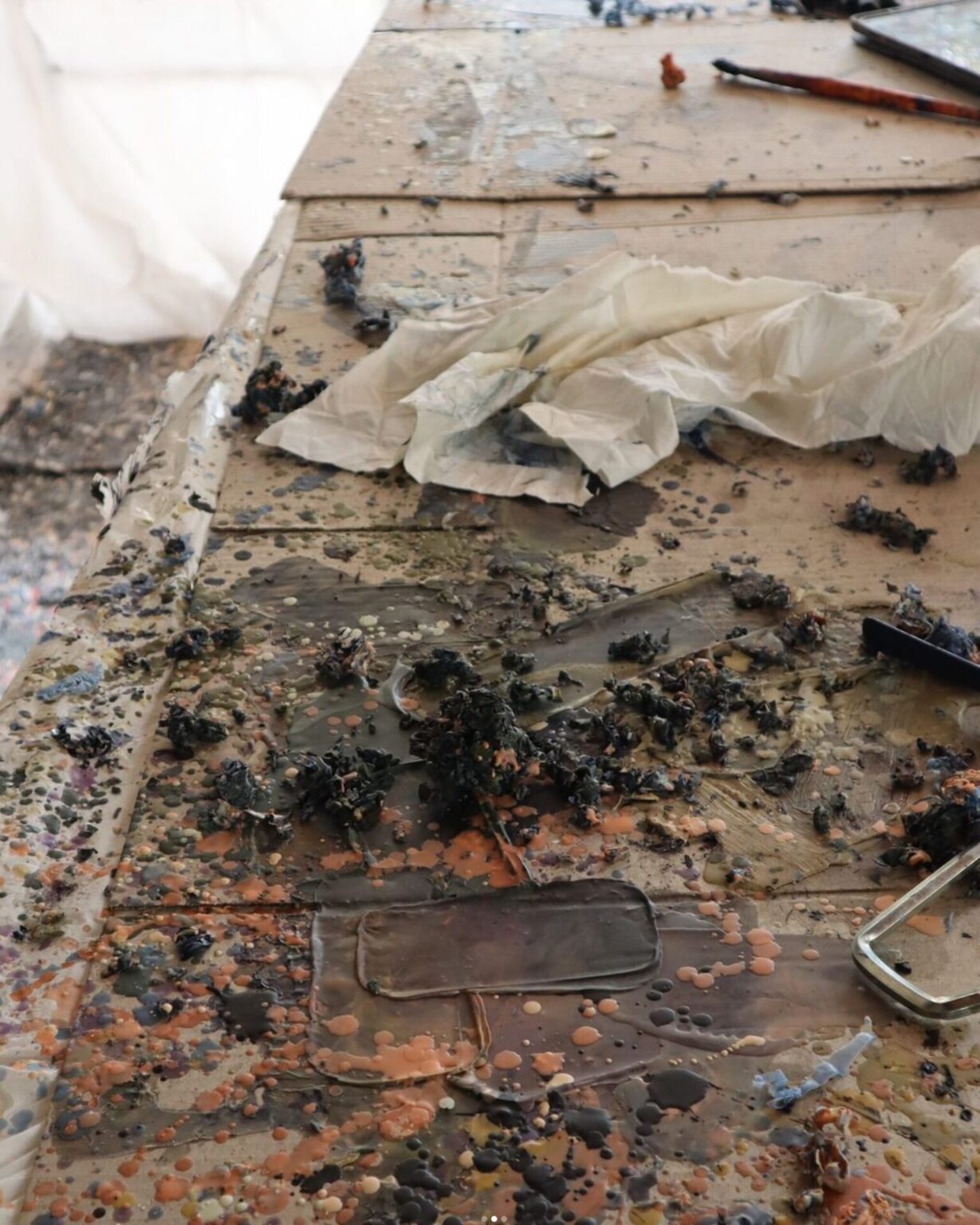
Le Cerf’s intention is to express awe – a powerful and universal human emotion. To be overwhelmed with feelings of reverence, admiration, even fear, in response to that which is grand, sublime and powerful. Of her painting, she states, “It must have that feeling, not just the appearance of the thing, but the vastness, of being moved by wonder. I keep going until I reach this point.” The Blue Mountains, with their spiritual and even psychological aspects, have provided the perfect location for developing this further. Le Cerf invites us to experience the wonder and majesty of the Australian landscape, encouraging us to pause and reconnect with the awe-inspiring natural world around us.
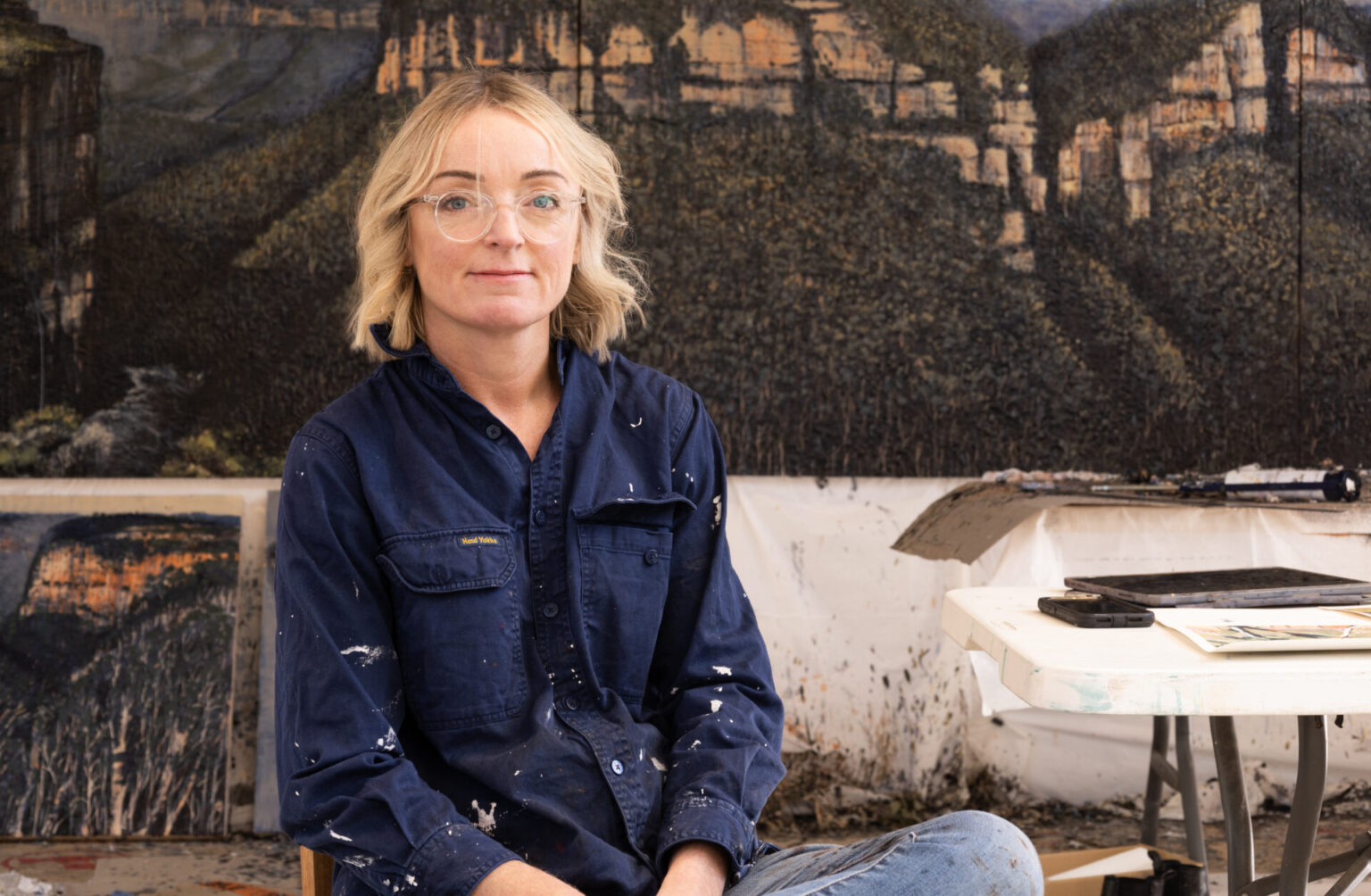

Six First Nations language groups maintain deep connections with the Country of the Greater Blue Mountains. These groups are the Dharawal and Gundungurra peoples (in the south), the Wiradjuri (in the west and northwest), and the Wanaruah, Darkinjung, and Darug (in the northeast).
The artist and Michael Reid Sydney acknowledge these First Peoples. We pay our respects to their Elders, past, present, and emerging.
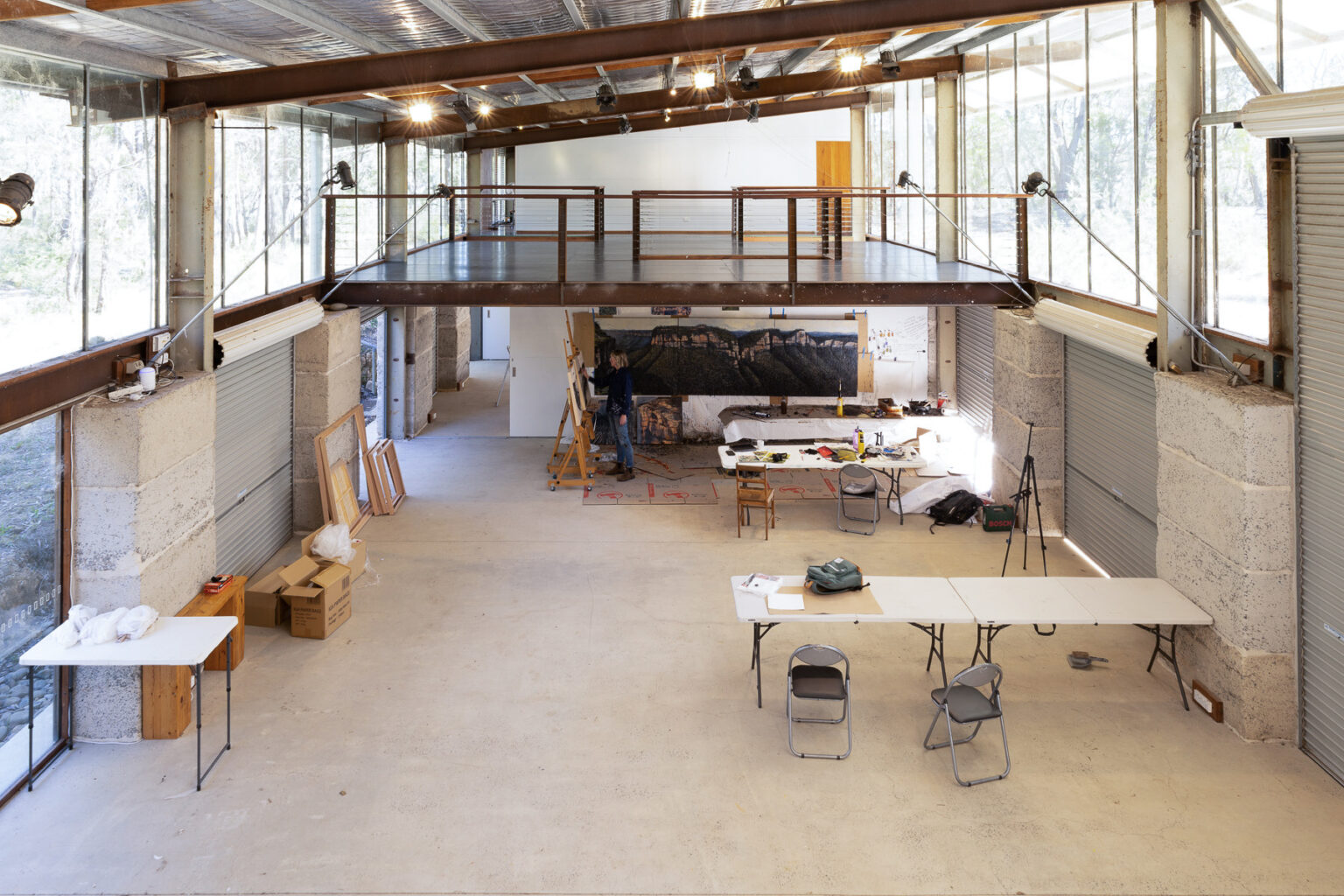

Sarah Hetherington
As a freelance art, architecture and design writer, Sarah Hetherington's writing can be found in a range of periodicals including Vault, Art World, The Art Market Report, Eyeline, Runway and Artlink. Sarah has also contributed essays and profiles for museum publications including Heide Museum of Modern Art’s Cubism and Australian Art and Artspace’s Column.
- XXXVIII LA Story by Michael Reid OAM April 2024
- XLIX Paddy’s Cottage November 2025
- XLVIII Washington DC by Michael Reid OAM November 2025
- XLVII The Outdoor Fireplace at Murrurundi by Michael Reid OAM October 2025
- XLVI Amelia Zander of Zander & Co. July 2025
- XLV Marlie Draught Horse Stud by Michael Sharp June 2025
- XLIV Trump Engulfed the Fires by Michael Reid OAM February 2025
- XLIII Newcastle by Jason Mowen October 2024
- XLII The Business of Gardening by Michael Reid OAM September 2024
- XLI Carly Le Cerf by Sarah Hetherington August 2024
- XL Pecora Dairy by Michael Sharp July 2024
- XXXIX Joseph McGlennon by Michael Reid OAM May 2024
- XXXVII Julz Beresford by Michael Sharp March 2024
- XXXVI Sydney Contemporary by Jason Mowen February 2024
- XXXV The US of A by Michael Reid OAM December 2023
- XXXIV Scone Grammar School’s principal Paul Smart by Victoria Carey November 2023
- XXXIII AgQuip by Jason Mowen October 2023
- XXXII Tinagroo Stock Horse’s Jill Macintyre by Victoria Carey September 2023
- XXXI The Old Gundy School House by Victoria Carey August 2023
- XXX Annette English by Victoria Carey July 2023
- XXIX The Ghan by Jason Mowen June 2023
- XXVIII All in the family: The Arnotts May 2023
- XXVII A Capital Plan by Jason Mowen March 2023
- XXVI Mandy Archibald March 2023
- XXV Paul West February 2023
- XXIV The Other Newcastle by Jason Mowen January 2023
- XXIII Mount Woolooma Glasshouse at Belltrees December 2022
- XXII Murrurundi to Matino: with Jason Mowen November 2022
- XXI James Stokes October 2022
- XX Adelaide Bragg September 2022
- XIX Tamara Dean August 2022
- XVIII Going home: Angus Street July 2022
- XVII Belltrees Public School June 2022
- XVI A Road Trip on the New England Highway May 2022
- XV David and Jennifer Bettington: from horses to houses April 2022
- XIV Denise Faulkner: Art of the Garden March 2022
- XIII Childhood memories: Willa Arantz February 2022
- XII Riding ahead: Giddiup January 2022
- XI Ingrid Weir’s rural life December 2021
- X Life by design: William Zuccon November 2021
- IX Life on the land: The Whites October 2021
- VIII Goonoo Goonoo Station September 2021
- VII Murrurundi: a garden playground August 2021
- VI Pat’s Kitchen July 2021
- V A creative life: Charlotte Drake-Brockman June 2021
- IV Magpie Gin May 2021
- III The Cottage, Scone April 2021
- II At home with Jason Mowen March 2021
- I A town that performs February 2021









